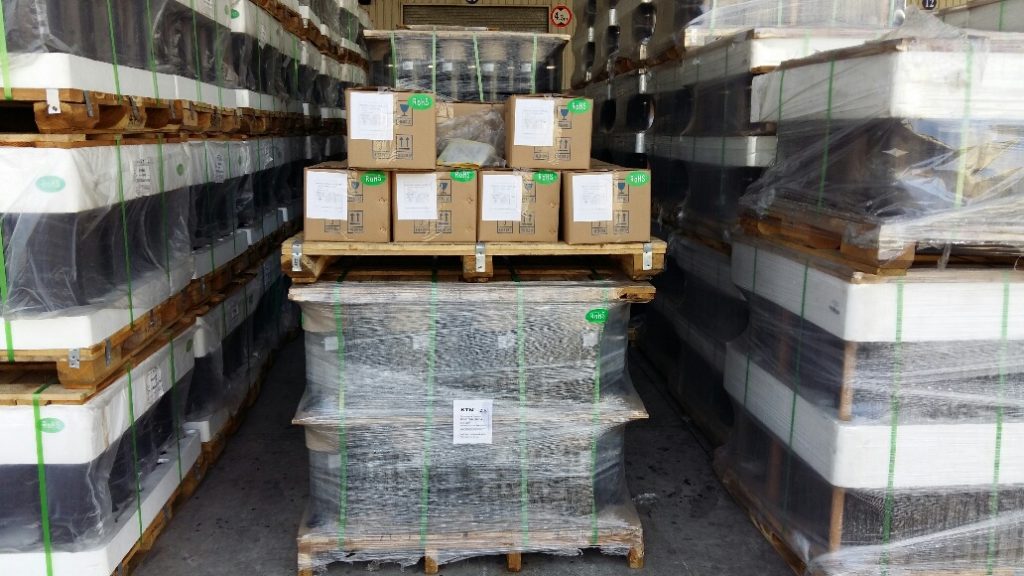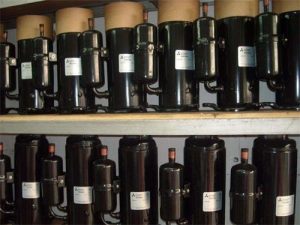Air conditioners heat and cool mainly by moving heat. When heating, heat is moved from outside to inside; when cooling, heat is moved from inside to outside.
The energy efficiency ratio of an electric heating wire is only 1:1, i.e. 1 kilowatt of electricity is consumed to produce 1 kilowatt of heat energy. Air conditioners have the highest energy efficiency ratio of all heating products, reaching about 1:3, i.e. consuming 1 kilowatt of electricity and being able to move about 3 kilowatts of heat, so they are energy-saving and power-saving.
The principle of air-conditioning heating and cooling is to use the characteristics of Freon condensation liquefaction to release heat and evaporation vaporization to absorb heat, in order to raise and lower the temperature of indoor air.
When the air conditioner is heating, the gas Freon is pressurized by the compressor and becomes a high-temperature and high-pressure gas, which enters the heat exchanger of the indoor unit (condenser at this time), condenses and liquefies and exerts heat to become a liquid, and at the same time heats up the indoor air, thus raising the indoor temperature. The liquid Freon is depressurized by a throttling device and enters the heat exchanger of the outdoor unit (evaporator at this point), where it evaporates and vaporizes, and absorbs heat, becoming a gas, and at the same time drawing heat from the outdoor air (which becomes colder). The Freon, which has become a gas, enters the compressor again to start the next cycle.
The condenser works for 1 minute and the surface temperature can reach 40 to 50 degrees if the fan is not used.
When heating, the indoor radiator becomes the condenser, when cooling, the outdoor radiator becomes the condenser. This is achieved by means of an electromagnetic 4-way switch.
Therefore, in winter when the house is relatively large, it is still more economical to use air conditioning and heating. Electric heaters and heaters are used locally.
Disadvantages of air-conditioning: it does not heat up quickly, and if there is condensation, it has to be defrosted first and wait 10 to 20 minutes. And if the outdoor temperature is below -5 degrees Celsius, the air-conditioning heating effect is not good. Because the air conditioner is not working at this time, the inverter is better, it can go to minus 15 degrees.
Why? At zero degrees, for example, the air conditioner’s heat supply can only reach 70%, and at minus 3 degrees, the heat supply only reaches about 30%. When the temperature is below zero, the outdoor part of the air conditioner is very susceptible to ice and frost, and the outdoor unit must be constantly defrosted, resulting in slower or lower heating power.
In order to alleviate this low heating power situation, some models are retrofitted with an electric auxiliary, but the power of the electric auxiliary generally can not be added very large (taking into account safety factors hanging machine is generally 600W ~ 800W), so it can only be to alleviate the poor heating situation, but not from the root of the solution. In terms of working principle, heating with a heat pump for air conditioning is a more economical way. Electric auxiliary heating equipment uses electrical resistance to generate heat, and the ultimate heating effect is a 1:2 ratio between input electricity and output heat (i.e. 600W of electrical power produces 600W of heat). Air conditioners, on the other hand, use the principle of heat “transfer” to cool and heat and can achieve efficiencies higher than 100% (typically 1000W produces 2600W of heat).
However, in weather below 0°C, the air conditioner’s heating effect is not satisfactory due to the low temperatures. The cooling capacity and heating capacity stated in the air conditioning manual are the results of tests carried out under standard operating conditions, and the cooling and heating effect of the air conditioner is not reflected in other external temperature conditions.




